The green pheasant (Phasianus versicolor), also known as the Japanese green pheasant, is an omnivorous bird native to the Japanese archipelago. It is famous for its beautiful colors and is the national bird of Japan. This bird lives in many places like fields, forests, and near farms. It is well known for its bright green feathers and unique calls. In this article, you will learn about the green pheasant’s appearance, habitat, behavior, diet, breeding, and its importance in Japanese culture.
What Does the Green Pheasant Look Like?
Male Green Pheasant
The male green pheasant is very colorful and easy to recognize. It has shiny bottle-green feathers on its chest and sides. Its neck and head are a mix of blue and purple colors, which look like a hood. The skin around its eyes is red, making it stand out even more. The bird’s back and wings have brown and gray patterns. It also has a long, pointed tail that helps it balance when it moves.
Female Green Pheasant
The female green pheasant is smaller than the male and has shorter tail feathers. Her feathers are brownish-black with spots and scalloped patterns. This pale brown border on the feathers helps to distinguish the dark feathers of her mantle. This mix of colors helps her blend into grass and bushes, which is useful when she’s keeping her eggs and chicks safe.
Where Does the Green Pheasant Live?
The green pheasant is widespread throughout its native range in Japan. They are commonly found throughout Honshu, Shikoku, and Kyushu, as well as some smaller islands. The green pheasant inhabits woodlands, forest edges, brush, grasslands, and parkland. These birds like places where they can find both cover and food easily. They are also found near human settlements because they frequents farmlands, which provide good feeding opportunities. Green pheasants often seek refuge in thick vegetation, which offers them safety and comfort.
The green pheasant has been introduced to some other places like Hawaii, parts of western Europe, and North America. The Introduced populations of green pheasants in Hawaii are stable. Populations in Western Europe have bred with common pheasants, resulting in no pure green pheasants.
What Does the Green Pheasant Eat?
Green pheasants have a varied diet. In the wild, green pheasants eat small animals, such as worms and insects, grains and plants. This mix helps them get enough nutrients to stay healthy. When kept in captivity, they are sometimes fed pellets, seeds, green plants, and live food like insects. This diet is similar to what they eat in the wild and keeps them strong.
How Does the Green Pheasant Behave?
Calls and Sounds
The male green pheasant has a loud, far-carrying call that sounds like “ko-kyok!” This call is often followed by a noisy wing flutter. These sounds help males attract females and warn other birds to stay away from their territory. When frightened, the bird flies away with a loud explosion of wings and hoarse calls, making it easy to notice.
Breeding and Raising Chicks
The breeding season of green pheasants starts in March or April and ends in June. Green pheasants reach adult plumage around the age of one year. Females can breed when they are about one year old. A female lays between six and fifteen eggs in one clutch. She sits on the eggs for about 23 to 25 days until they hatch. The female is a good parent and takes care of her chicks carefully, protecting them from danger. Green pheasants are not currently bred in large numbers.
Sensitivity to Earthquakes
In Japan, many people believe that green pheasants can sense earthquakes before humans do. They say the birds get scared and make loud calls when an earthquake is about to happen. This behavior has made the green pheasant even more special in Japanese culture.
The Green Pheasant in Japanese Culture
The Green Pheasant holds a special place in Japanese culture and is often associated with virtues such as nobility, beauty, and protection. It appears in various aspects of Japanese art, literature, and folklore, symbolizing good fortune and prosperity.
1. Symbolism
Messenger of the Gods: In Japanese mythology, the Green Pheasant is often seen as a divine messenger. It is believed to bridge the human and spiritual worlds.
Protection and Alertness: The bird is known for its sharp senses and loud calls, symbolizing vigilance and protection. In folklore, its cries are said to warn of impending danger, such as earthquakes.
2. Mythological References
Nihon Shoki: In Japan’s ancient chronicles, the Green Pheasant appears as a messenger of the sun goddess, Amaterasu. It is said to deliver messages between the heavens and the earth.
Momotaro Legend: In the famous Japanese folktale “Momotaro” (Peach Boy), a Green Pheasant is one of the three animal companions (alongside a dog and a monkey) that help the hero defeat ogres. The bird’s intelligence and loyalty are celebrated in this story.
3. Cultural Representation
Art and Literature: The Green Pheasant frequently appears in traditional Japanese paintings, poetry (like haiku), and crafts. Its vibrant green and red plumage make it a popular subject in art.
Seasonal Symbol: In Japanese poetry, the pheasant is often associated with spring, as its calls are a harbinger of the season.
The Green Pheasant is not just a bird in Japan; it is a cultural icon that embodies the nation’s connection to nature, mythology, and tradition.
Conservation Status and Efforts
Current Threats
Despite its cultural significance, the green pheasant faces many threats in the wild. Green pheasant populations are declining. Deforestation negatively affects green pheasant numbers in Japan. In addition, predation and hunting by exotic species further affects its population size.
Conservation Initiatives
To address these threats, various conservation initiatives have been implemented in Japan. These efforts include habitat restoration projects, legal protection measures, and public awareness campaigns. Organizations and government agencies work together to monitor populations, protect critical habitats, and promote sustainable practices to ensure the Green Pheasant’s survival.
How to Recognize Different Subspecies
The green pheasant has three recognized subspecies: southern, northern, and Pacific green pheasants. They differ slightly in appearance:
P. v. versicolor: The southern green pheasant, the nominate subspecies, with the darkest plumage. The male southern green pheasant has dark green plumage on the breast, neck, mantle, and flanks.
P. v. tamensis: Pacific green pheasant. The male Pacific green pheasant, with lighter plumage that looks more purple and blue.
P. v. robustipes: Northern green pheasant. The male northern green pheasant, with the lightest plumage and a more bronze crown and back.
These three subspecies differ from other subspecies in their unique plumage characteristics and taxonomic classifications.
Keeping Green Pheasants in Captivity
Green pheasants require a large well-planted aviary for optimal care in captivity. The aviary should have grass and reed areas where the female can hide and lay eggs safely. Males are not aggressive, so one male can live with several females. These birds are hardy and can handle cold weather well. Green pheasants have also been bred on game farms in North America, where they are sometimes crossed with the Common Pheasant to support pheasant populations and the hunting industry.
Conclusion
The Green Pheasant, Japan’s national bird, is a symbol of the country’s rich natural and cultural heritage. Its vibrant plumage, ecological significance, and deep-rooted presence in Japanese culture make it a bird worth celebrating and protecting. As Japan continues to face environmental challenges, the Green Pheasant serves as a reminder of the importance of conservation and the need to cherish and safeguard the nation’s wildlife for future generations. Through continued efforts and a collective commitment to preserving nature, the Green Pheasant can continue to thrive and inspire both Japanese people and visitors from around the world.
Frequently Asked Questions
1. What is the state bird of Tokyo?
The state bird of Tokyo is the Grey Heron (Ardea cinerea). This elegant bird is often seen around wetlands and rivers in the Tokyo area.
2. What is the National tree of Japan?
The national tree of Japan is the Japanese Cedar (Cryptomeria japonica), known locally as “sugi.” This tree is highly valued in Japan for its wood and is commonly planted around temples and shrines.
3. What is the National flower of Japan?
The national flower of Japan is the Cherry Blossom (Sakura). These flowers are celebrated across the country, especially during the spring season when cherry blossom festivals (hanami) take place.
4. Is the green pheasant endangered?
No, the green pheasant is not currently endangered. The green pheasant is classified as Least Concern by the IUCN Red List due to its stable population and adaptable nature.

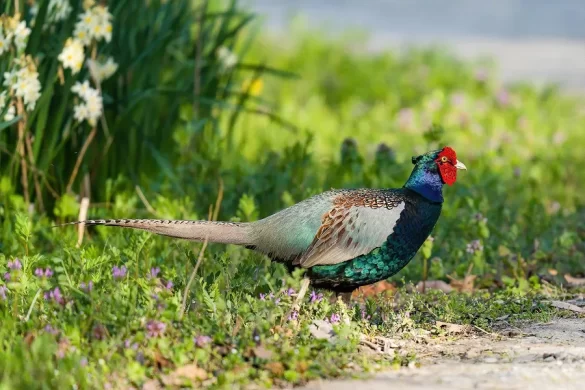
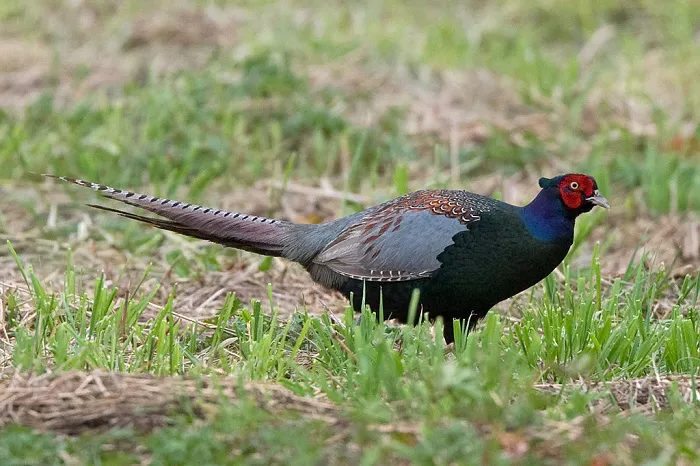
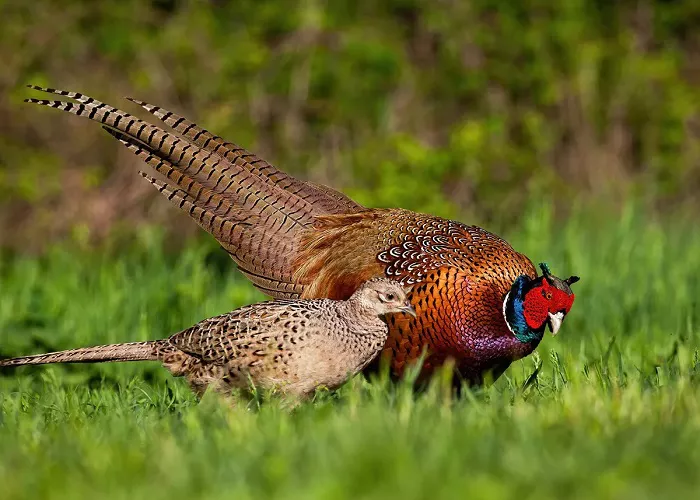
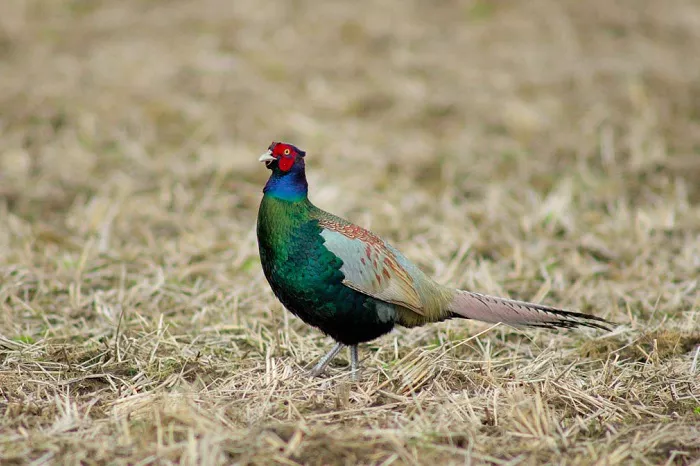
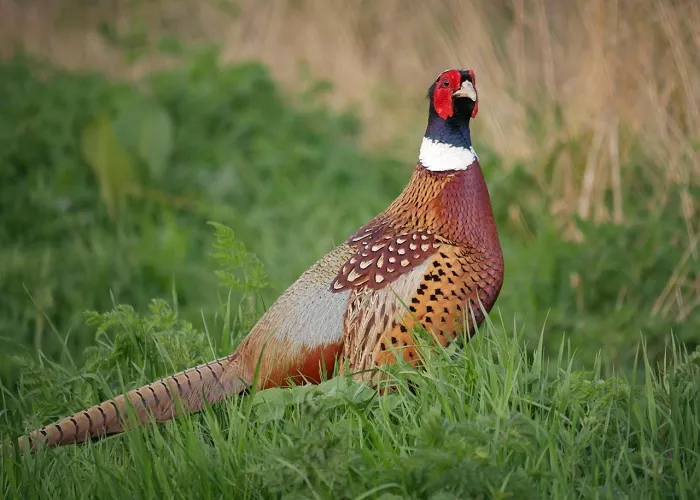
 Facebook
Facebook  Instagram
Instagram  Youtube
Youtube 